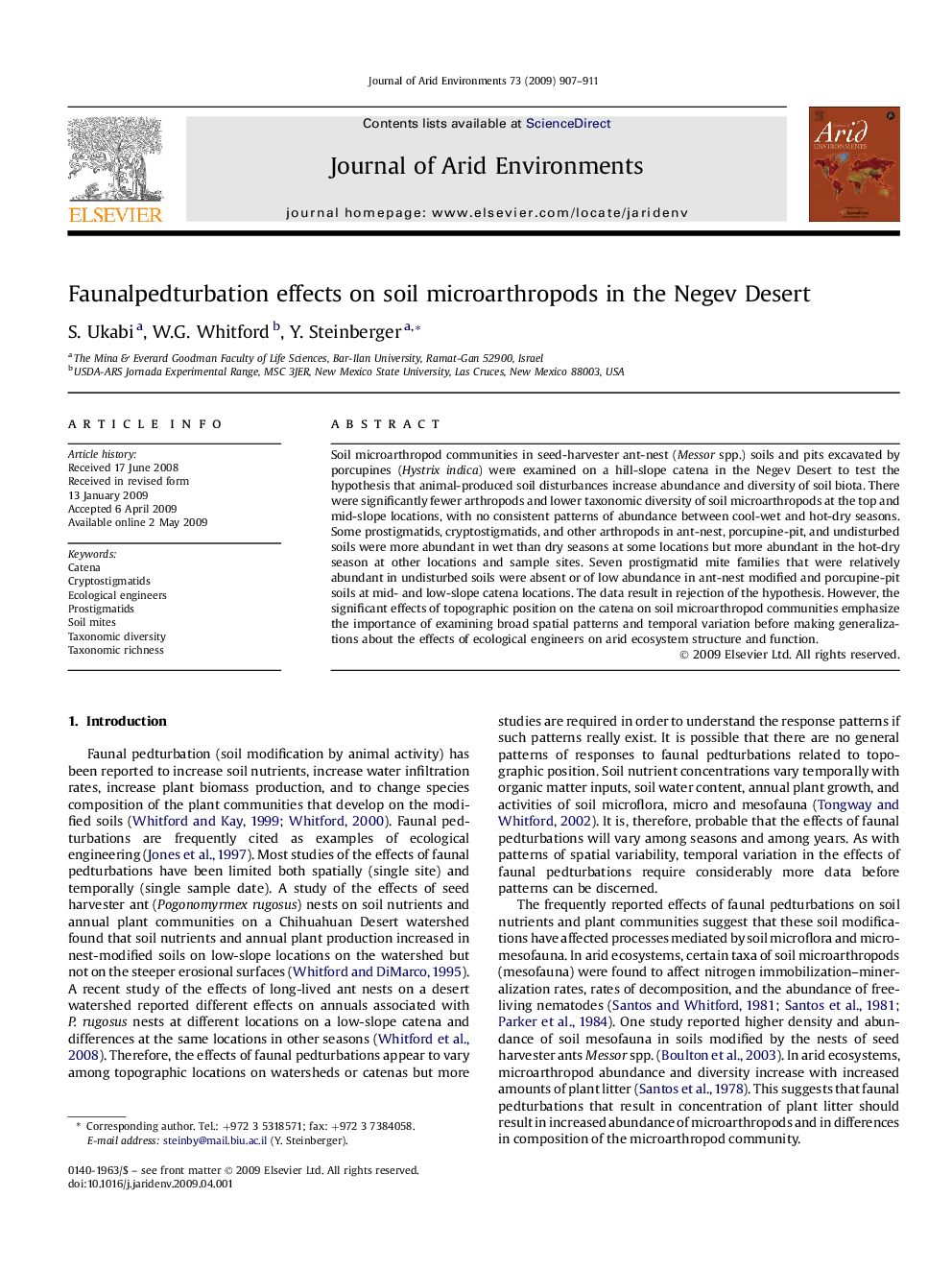| Article ID | Journal | Published Year | Pages | File Type |
|---|---|---|---|---|
| 4393681 | Journal of Arid Environments | 2009 | 5 Pages |
Abstract
Soil microarthropod communities in seed-harvester ant-nest (Messor spp.) soils and pits excavated by porcupines (Hystrix indica) were examined on a hill-slope catena in the Negev Desert to test the hypothesis that animal-produced soil disturbances increase abundance and diversity of soil biota. There were significantly fewer arthropods and lower taxonomic diversity of soil microarthropods at the top and mid-slope locations, with no consistent patterns of abundance between cool-wet and hot-dry seasons. Some prostigmatids, cryptostigmatids, and other arthropods in ant-nest, porcupine-pit, and undisturbed soils were more abundant in wet than dry seasons at some locations but more abundant in the hot-dry season at other locations and sample sites. Seven prostigmatid mite families that were relatively abundant in undisturbed soils were absent or of low abundance in ant-nest modified and porcupine-pit soils at mid- and low-slope catena locations. The data result in rejection of the hypothesis. However, the significant effects of topographic position on the catena on soil microarthropod communities emphasize the importance of examining broad spatial patterns and temporal variation before making generalizations about the effects of ecological engineers on arid ecosystem structure and function.
Related Topics
Physical Sciences and Engineering
Earth and Planetary Sciences
Earth-Surface Processes
Authors
S. Ukabi, W.G. Whitford, Y. Steinberger,
